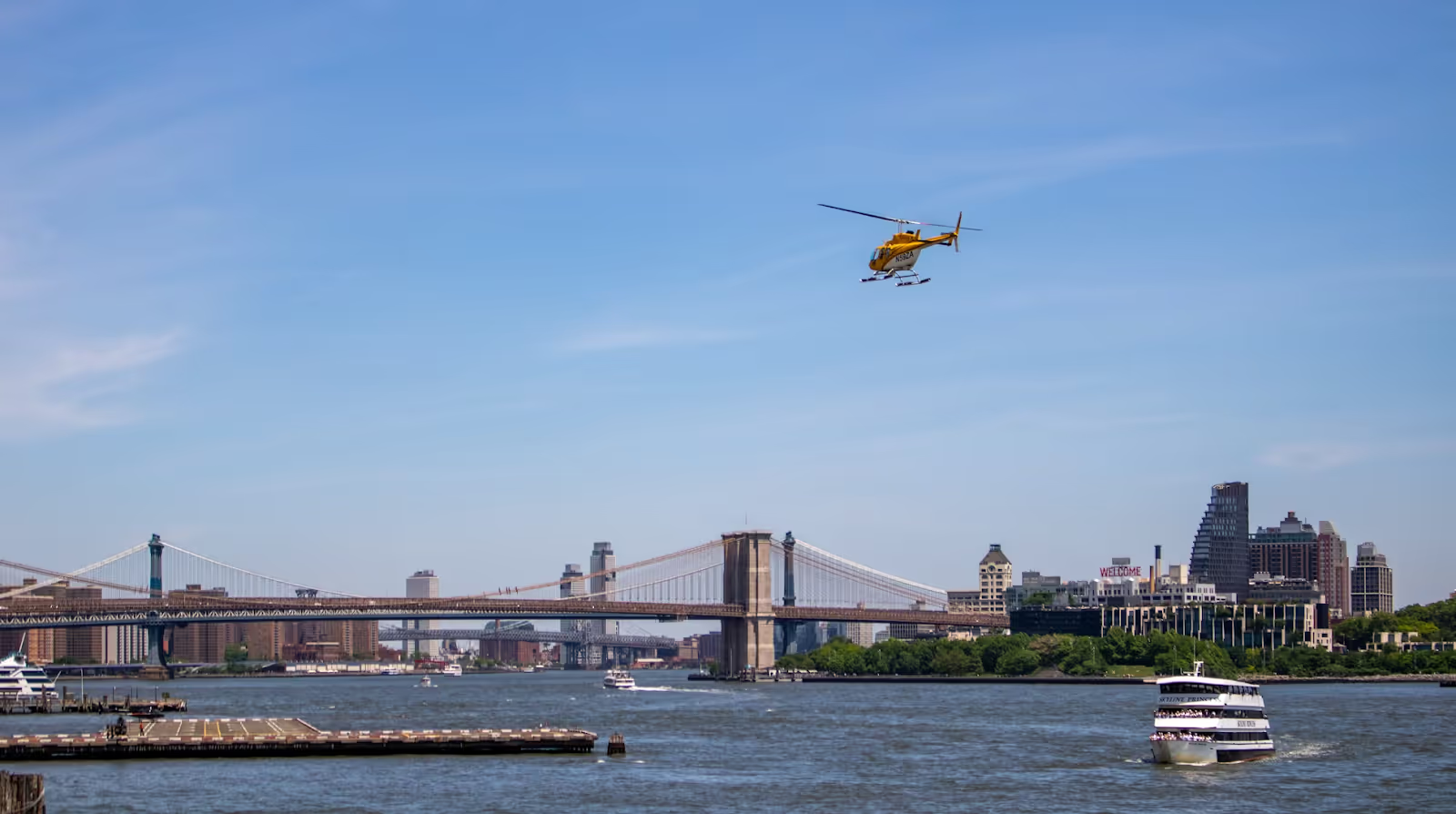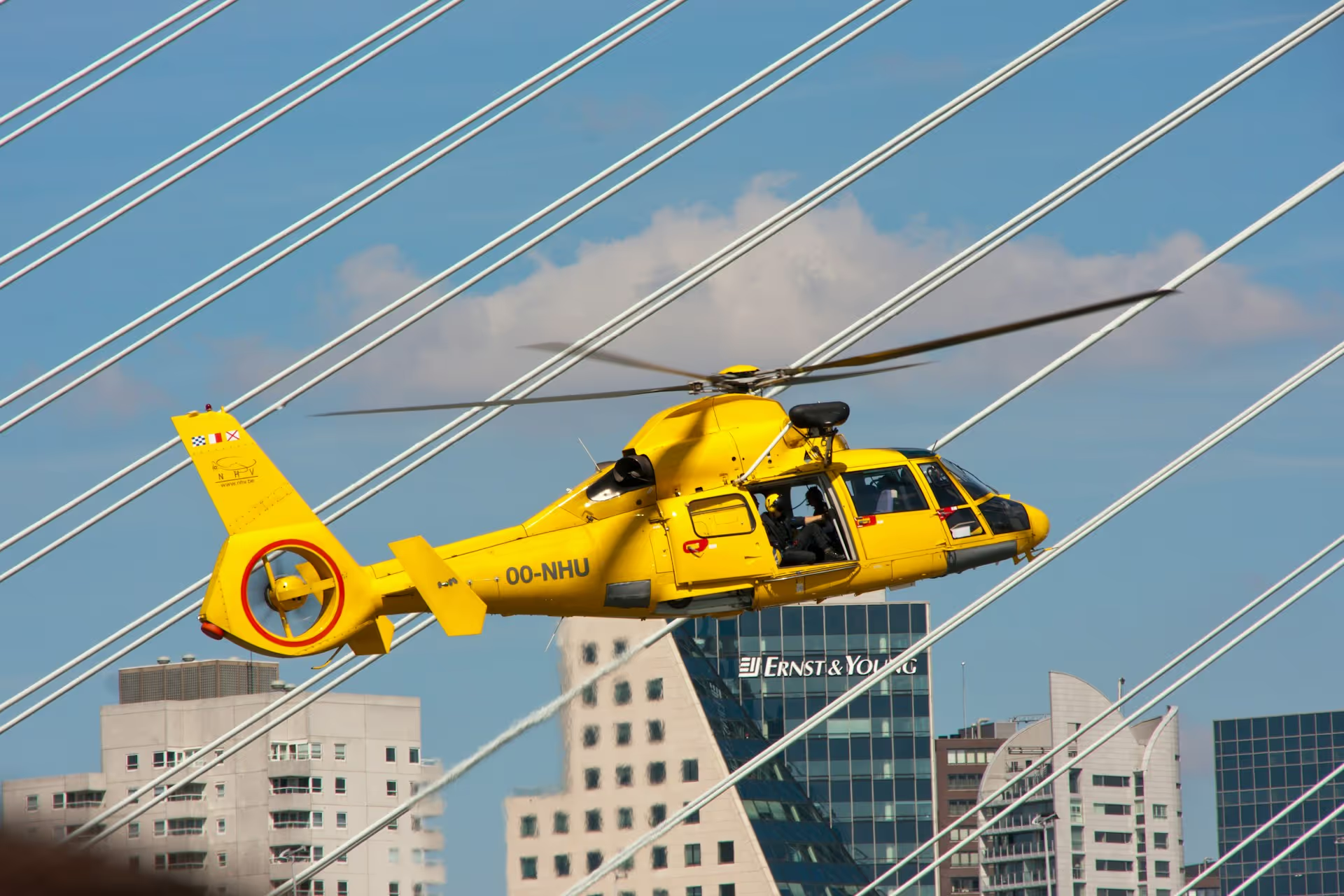Inspecting bridges is no simple task. With hundreds of thousands of bridges across the U.S. (and many in aging condition), regular inspections are critical to ensure public safety and infrastructure health. But getting eyes on every beam and cable isn’t always easy – especially when bridges span remote terrain, deep water, or high-traffic areas.
That’s why many agencies are turning to helicopters for support. Helicopters make it faster, safer, and more efficient for inspectors to assess bridge conditions from above.
In this blog, we’ll explore the difficulties of traditional bridge inspections, the advantages of hiring experienced helicopter-based infrastructure support, and what to look for when selecting the right partner for the job.
Limitations of Conventional Bridge Inspection Methods
There are over 623,000 bridges in the U.S. alone, with nearly 5 billion vehicle trips made across them each day. Most public road bridges longer than 20 feet are required to follow the National Bridge Inspection Standards (NBIS), which generally call for inspections every 24 months – if not sooner.
In addition to the overwhelming volume of bridges, inspectors must navigate a range of challenges, from safety hazards to resource constraints. Here are five key difficulties of bridge inspections that helicopter services can help you overcome:
- Hard-to-Reach Infrastructure: Some bridges are tough to access due to their location, height, or design. For example, suspension bridges require special safety measures and equipment, while bridges built over gushing waters pose an additional safety threat. Busy traffic can make inspections even more difficult.
- Aging Structures: 49.1% of U.S. bridges are rated in "fair" condition, while 6.8% are in "poor" condition. These older bridges require special attention and more detailed checks that stretch resources thin.
- Limited Budgets: Traditional bridge inspections are costly, as they require skilled inspectors, specific equipment, and traffic control. The average cost of inspecting a bridge using conventional methods ranges from $4,500 to $10,000 for a single bridge. Some also require crews experienced in underwater inspections, which can be even more expensive.
- Slow Adoption of Technology: Helicopters and drones equipped with sensors can vastly improve inspections, but many agencies still rely on visual checks. These are time consuming and can result in missed hidden damage.
- Safety Risks: Heights, nearby traffic, and inclement weather can pose safety risks to inspectors that can impact inspection quality or lead to injury or death.
These issues highlight the need for better funding, smarter use of resources and technology, and improved coordination to keep bridges safe and inspections effective.
How Helicopters Support Bridge Inspections
Helicopters play a critical role in bridge inspections and maintenance. They offer speed, flexibility, and safe access to hard-to-reach areas – especially in challenging environments or complex structures.

Here’s how helicopters can enhance your next bridge inspection:
- Transportation of Crews and Equipment: Helicopters can transport personnel, specialized gear, and tools to remote areas and sites where setting up scaffolding would cause major traffic disruptions.
- Aerial Surveys: High-resolution cameras mounted on helicopters can provide detailed images and videos of bridges and their supporting structures, even in spots that are hard to reach. Aerial surveys enable inspectors to quickly identify large-scale issues and potential hazards.
- Thermal Imaging: Imaging tools like LiDAR can detect structural weaknesses and damage that is largely invisible to the naked eye.
- Monitoring: Data from aerial surveys and helicopter-based bridge inspections can help inspectors track changes to bridges over time.
Advantages of Helicopter-Based Bridge Inspection
Helicopters don’t replace bridge inspectors, but they do enable inspectors to do their jobs more safely and efficiently. Here are the key benefits of helicopter-based bridge inspections to consider:
Improved Safety
Helicopters allow inspectors to do their work from the skies, rather than being on a bridge (or suspended beneath it). This reduces the risk of falls, exposure to traffic, and other on-site hazards.
Faster Inspections
Helicopters are capable of reaching speeds up to hundreds of miles per hour, enabling inspectors to inspect extensive bridge networks or assess multiple bridges in a day. These aircraft can deploy almost immediately, and there’s no need for inspectors to wait around while scaffolding is set up and roads are closed.
Speed is essential for reducing costs, and it’s especially useful after natural disasters like floods, earthquakes, and hurricanes where a quick response is essential.
Boosted Cost Efficiency
Less downtime, fewer closures, and faster assessments lead to lower overall costs. This means agencies can allocate more funds toward essential repairs instead of prolonged inspections.
Enhanced Accessibility
Bridges built over oceans, rivers, deep ravines, and challenging terrain are difficult to inspect using trucks, ropes, and scaffolding. Helicopters are capable of maneuvering in tight spaces and hovering, which allows them to get the job done without the need for access roads and extensive ground equipment setup.

Reduced Traffic Disruption
Helicopter companies can deploy their aircraft directly to the bridges that need to be inspected, bypassing the need for lane closures that disrupt the flow of traffic.
Simplified Record-Keeping
Aerial photos taken from helicopters and data collected from sensors can be stored and assessed to track changes to bridges over time. Consistent monitoring makes it easy for inspectors to spot hazardous areas early so they can plan repairs more effectively.
Discover the role of helicopters in smart city infrastructure planning and development.
How to Evaluate Potential Helicopter Service Providers
Not all helicopter service companies are created equal, and not all helicopter teams are built for this type of infrastructure inspection work. When you’re choosing a partner for helicopter-based bridge assessments, here’s what really matters:
- Expertise in Infrastructure Work: You don’t need a helicopter company that’s solely experienced in sightseeing tours and charters. You need a team that understands how to complete complex jobs economically, safely, and efficiently – in even the hardest-to-reach and toughest-to-navigate locations.
- Safety First: The success of helicopter-based bridge inspections hinges on precision, efficiency, and unwavering safety. Look for a clean safety record and a company culture that upholds the highest standards of reliability and professionalism.
- Modern Fleet and Equipment: The right aircraft, tools, and specialized equipment make all the difference when it comes to performance. Well-maintained aircraft and rigorous maintenance protocols guarantee reliable performance and minimal downtime.

Why Helicopter Express Is the Right Choice for Helicopter-Based Bridge Inspections
Our team at Helicopter Express has supported infrastructure and utility operations across the country for over three decades. When you work with us, you get more than just skilled and experienced pilots and crews. You get a true partner to support your critical inspection work.
Here’s why bridge inspection teams choose Helicopter Express again and again:
- Experienced Crews: Our pilots and ground crews have deep experience in heavy-lifting, construction, utility support, disaster response, and other types of precision aerial work. We’re highly trained and thrive in tough environments.
- Modern and Agile Fleet: Our team meticulously selects each aircraft in our fleet to ensure they can handle even the most demanding projects and lifting operations. Our diverse lineup is known for its agility and stability, making our aircraft ideal for bridge inspections and other types of infrastructure work.
- Safety Above All: Our history of excellence is built on a foundation of unwavering safety protocols, rigorous maintenance standards, and a relentless pursuit of customer satisfaction. We continually invest in the latest technologies and equipment to make our operations safe and environmentally responsible.
- Nationwide Reach: We’re based in North Georgia but operate across the entire U.S. and beyond. We’re ready to deploy whenever your bridge inspection needs arise.
- Collaborative Approach: At Helicopter Express, we know every bridge inspection project comes with its own set of challenges. That’s why we work closely with you to create a tailored plan that fits your scope, location, timeline, and budget. With open communication and a team of experts by your side, you’ll get seamless, efficient results from start to finish.
Ready to Upgrade Your Bridge Inspections?
We’re ready to provide a safer and more efficient way to inspect bridges. Contact Helicopter Express to discuss your project, request a quote, or learn more about how we can support your infrastructure project.

